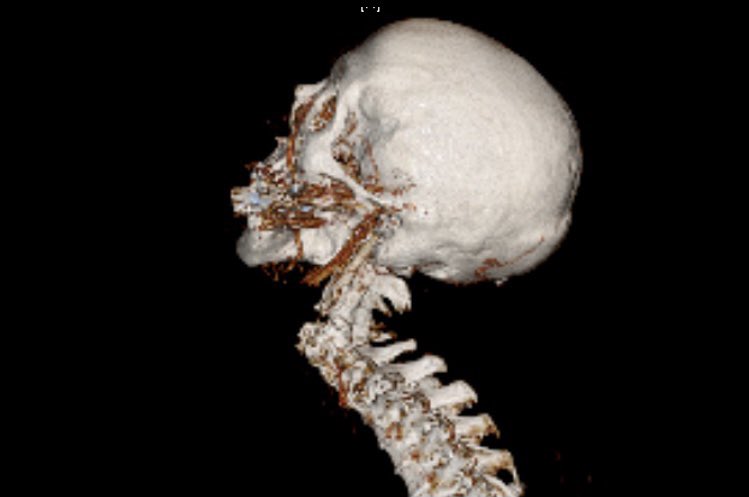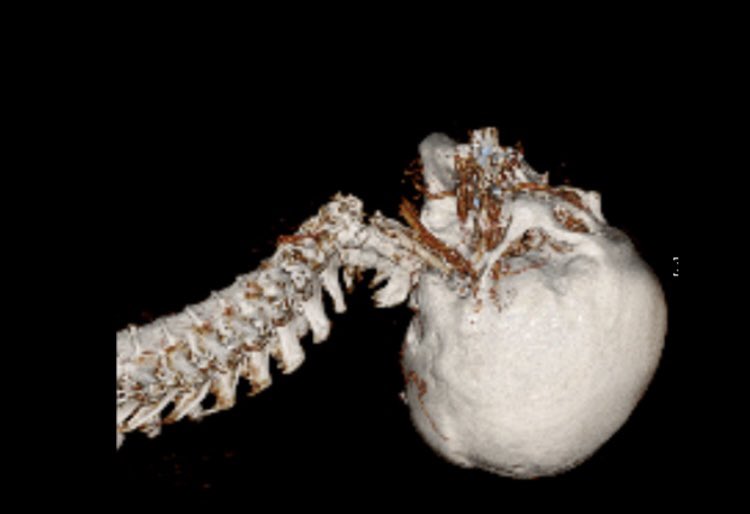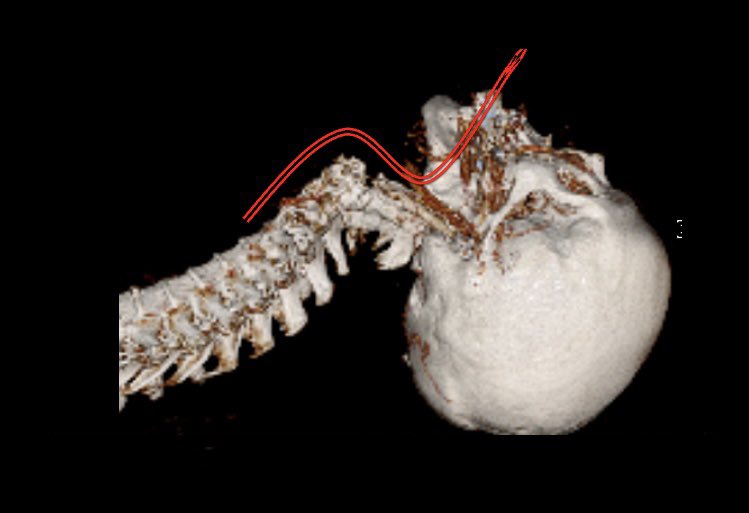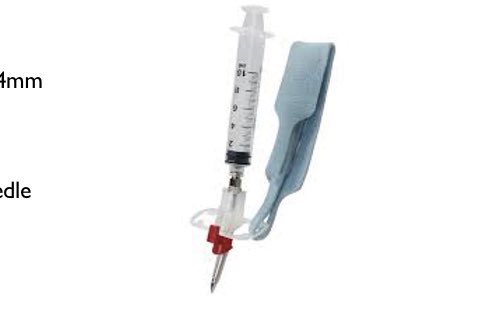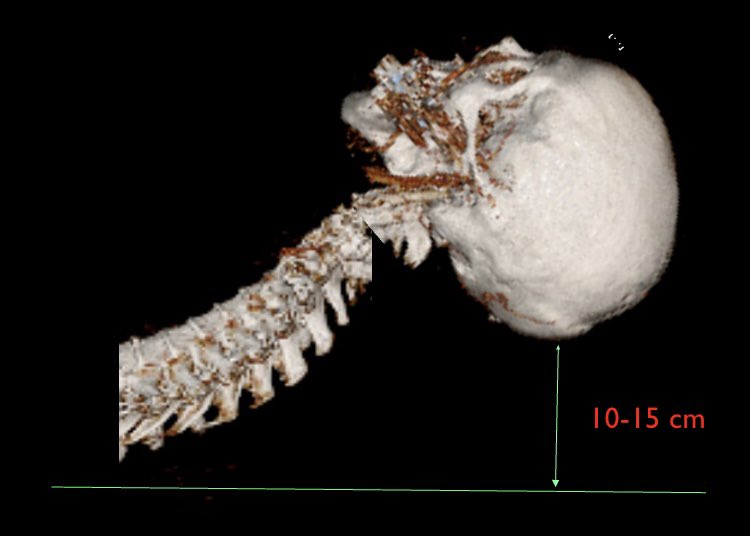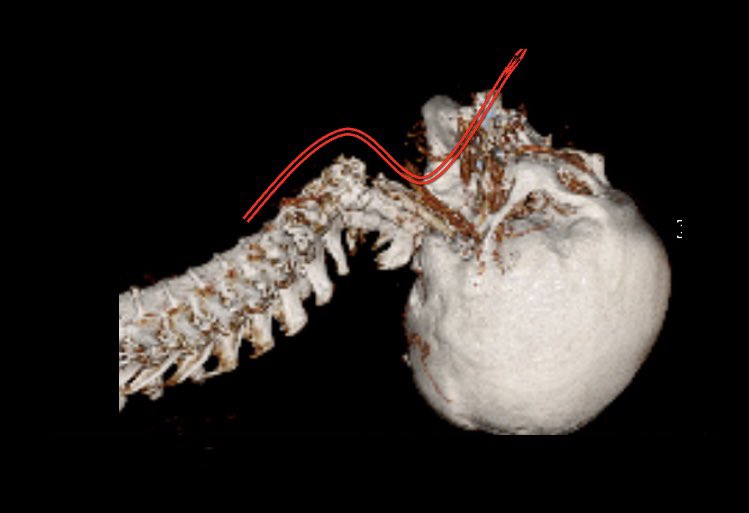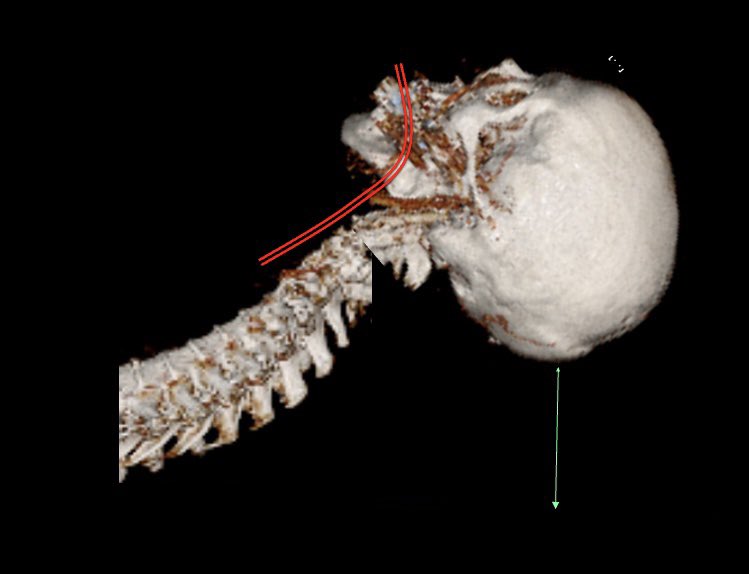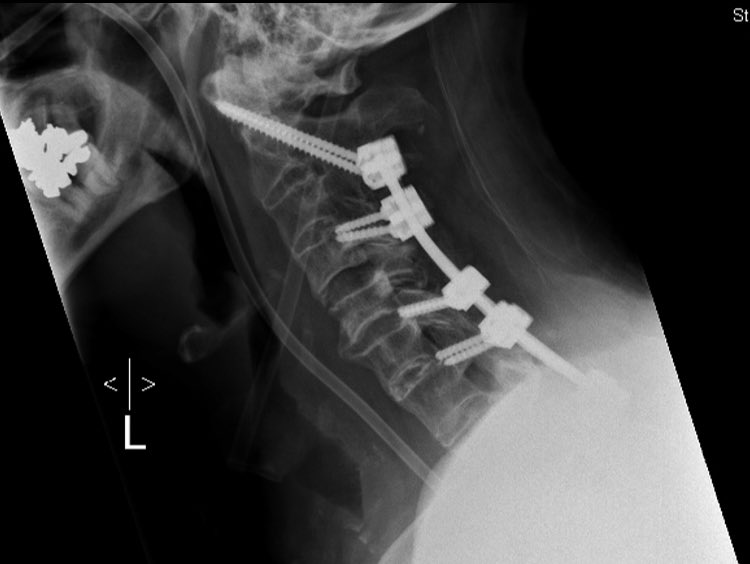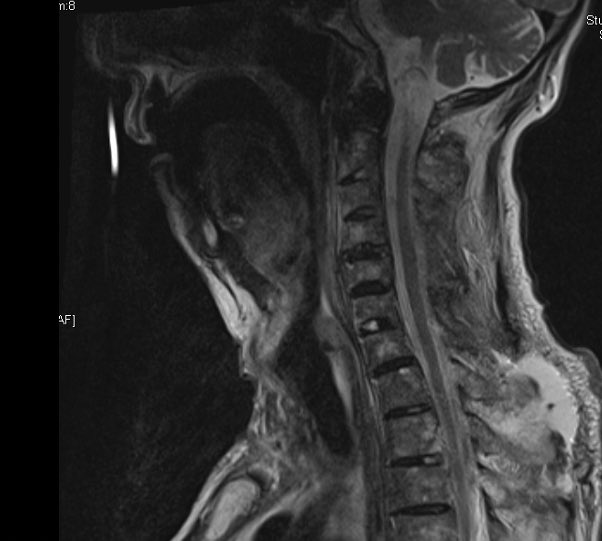I guess in every bigger trauma center cases like this are seen - maybe every 2 years, maybe more often. Ankylosing disorders and trauma = tremendously increased risk of fractures and severe neurological deficits, but... in first line it’s about surviving the compromised airway  https://abs.twimg.com/emoji/v2/... draggable="false" alt="👇" title="Rückhand Zeigefinger nach unten" aria-label="Emoji: Rückhand Zeigefinger nach unten">
https://abs.twimg.com/emoji/v2/... draggable="false" alt="👇" title="Rückhand Zeigefinger nach unten" aria-label="Emoji: Rückhand Zeigefinger nach unten">
yesterday’s @virtualspine conference was about ankylosing spondylitis and the impact this burden has. Some years ago I had a talk to our anaesthetists, who are first responders and save the patients at the scene or bring them from smaller hospitals to us. A thread...
you see - this patient wasn’t intubated and ventilated during CT scan. In this hyperextended position you can easily see what “A-problem” is present due fracture dislocation / angulation!
This airway is not (!!!) safe! The patient is at high risk to die!
This airway is not (!!!) safe! The patient is at high risk to die!
Airway management has absolute priority in #ATLS! It’s “A”, while the myelon comes with the “D”. If you take the phrenic nerve into consideration maybe it’s “B”. The ATLS leader in the ER has to solve the A problem first! You can see on 3D rendered images, the grotesque situation
The ER-doc or anaesthetist and the spine surgeon/trauma surgeon have to act quickly now.
This patient detoriated quickly after the CT scan and intubation was impossible. So quicktrach (cannula over needle) was performed. That saved this life!
This patient detoriated quickly after the CT scan and intubation was impossible. So quicktrach (cannula over needle) was performed. That saved this life!
Can we prevent these dangerous situations? Yes! But ER docs and anaesthetists don’t dare to move this highly unstable c-spine. But the solution is very easy: elevate the head! The airway gets better immediately, the spinal cord is in less danger. It’s our job to “allow” this
The airway is quite “normal” to his usual anatomy, when the head is elevated. Don’t pull, better push the head a little to the torso. And after elevation, fix the head with tapes. Early surgery recommended.
Spine surgeons / trauma surgeon have to support the ER team and anaesthetists - usually we help our colleagues, are present in person and be part of the team. Telemedicine isn’t good in situations like this.
Why all posterior? Because anterior is not necessary!
The cervical spine has the biomechanics of a long bone: Double plating not necessary in femoral shaft fractures (a LISS plate is enough). Only in pseudarthrosis/revision I take it into consideration to add anterior fusion.
The cervical spine has the biomechanics of a long bone: Double plating not necessary in femoral shaft fractures (a LISS plate is enough). Only in pseudarthrosis/revision I take it into consideration to add anterior fusion.
by the way: did you notice the odontoid fracture?
Always look for the 2nd fracture! The obvious dislocation sometimes distracts us from “minor” but potentially dangerous injuries!
Always look for the 2nd fracture! The obvious dislocation sometimes distracts us from “minor” but potentially dangerous injuries!

 Read on Twitter
Read on Twitter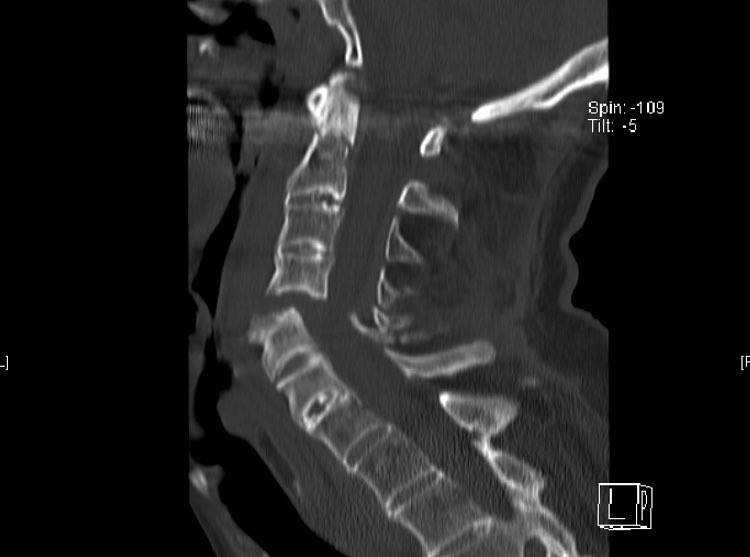 " title="I guess in every bigger trauma center cases like this are seen - maybe every 2 years, maybe more often. Ankylosing disorders and trauma = tremendously increased risk of fractures and severe neurological deficits, but... in first line it’s about surviving the compromised airway https://abs.twimg.com/emoji/v2/... draggable="false" alt="👇" title="Rückhand Zeigefinger nach unten" aria-label="Emoji: Rückhand Zeigefinger nach unten">" class="img-responsive" style="max-width:100%;"/>
" title="I guess in every bigger trauma center cases like this are seen - maybe every 2 years, maybe more often. Ankylosing disorders and trauma = tremendously increased risk of fractures and severe neurological deficits, but... in first line it’s about surviving the compromised airway https://abs.twimg.com/emoji/v2/... draggable="false" alt="👇" title="Rückhand Zeigefinger nach unten" aria-label="Emoji: Rückhand Zeigefinger nach unten">" class="img-responsive" style="max-width:100%;"/>

